Having released a “preliminary draft” of its comprehensive plan to transform Downtown Oakland earlier this year, Oakland’s Planning Department will present its official Draft of the Downtown Oakland Specific Plan (DOSP) to the City’s Planning Commission this evening and solicit comments from the Commissioners and public.
If adopted, the DOSP would now allow for the development of up to 20 million square feet of new commercial space and over 29,000 new residential units over the next two decades, including up to 7,250 units of housing which could be offered at below market (affordable) rates, centered around BART and its connectors.
A network of multimodal streets would provide priority paths for buses and bikes, along with a continuous “Green Loop” around the downtown core, connecting to network of parks and open spaces.
The adoption of special zoning and land use regulations would attempt to preserve existing cultural districts, including the Black Arts Movement District (BAMBD), while establishing a new “Maker District” around Jack London Square and solidifying a Chinatown Cultural Heritage District and Arts & Garage District in Koreatown/Northgate (KONO).
And in terms of timing, Oakland’s Planning Department is aiming to finalize the DOSP by the second quarter of next year and is positioning for its adoption next summer.
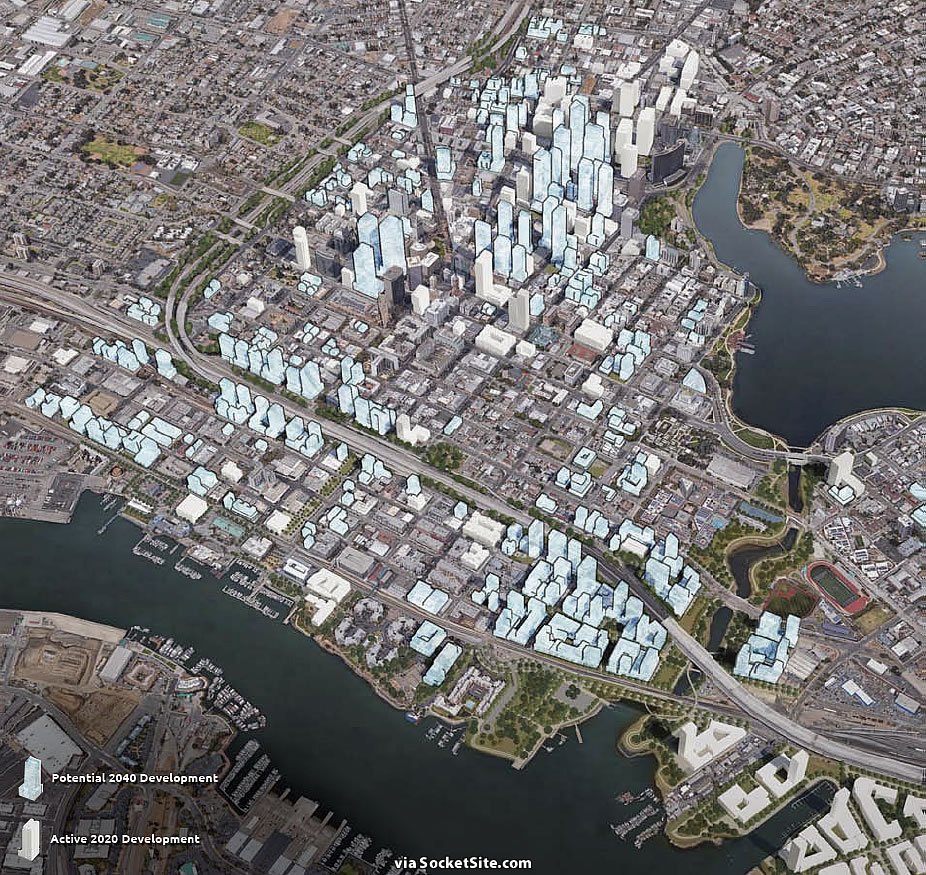

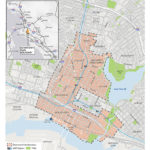
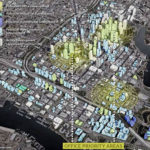
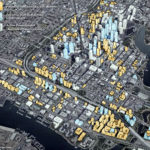
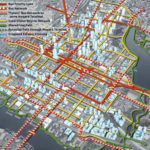
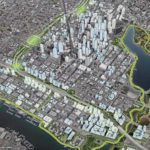
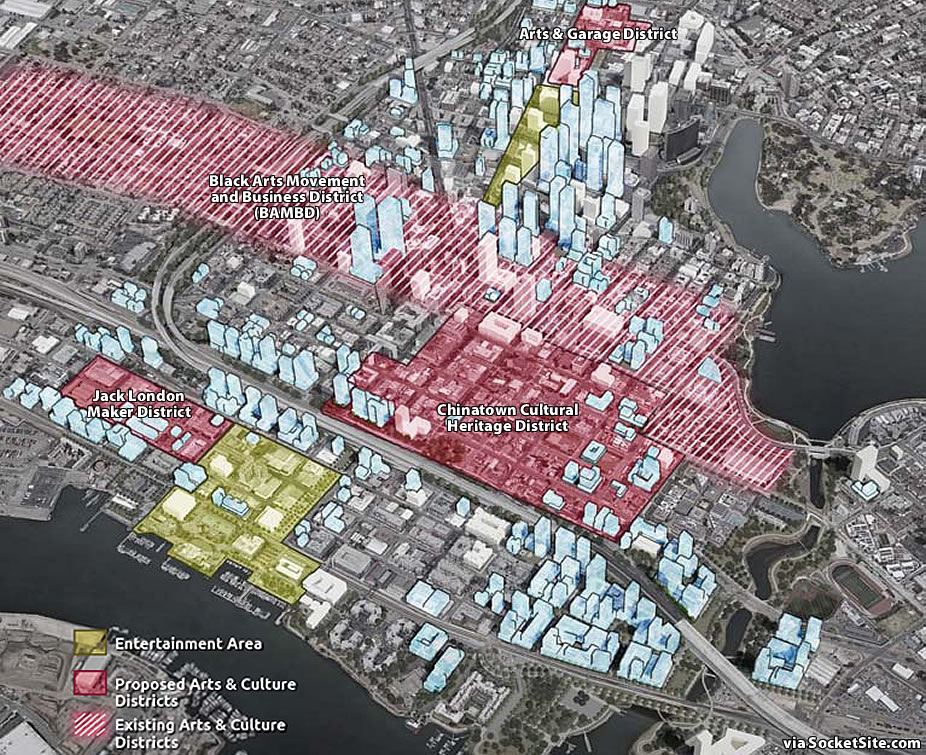
The first graphic seems to be an illustration of the Chinese Exclusion Act, 21st Century Style
Chinatown is largely excluded from the DOSP due to the fact that it’s primarily covered by a previously adopted plan (the Lake Merritt BART Station Area Plan).
This plan is fantastic. This is what Oakland should be as the geographic center of the Bay Area. There’s already great progress being made with the current building boom.
This seems seriously lacking in ambition. This timeline is needlessly long and covers at least a few economic cycles. While certainly not the only cause of lagging development in Oakland, seemingly conservative plans like this don’t do much to inspire or incentivize new development.
IDK? Area plans are usually long-term, multi-cycle endeavors. More ambitious? Sure -but do we have the political will and monetary resources to Haussmannize Oakland? No. Oakland’s last series of area plans have spurred 1,000’s of new housing units and millions of square feet of commercial space. The BVDSP quickly resulted in a construction boom. The WOSP’s completion seems to be panning out… Holliday Development plans for the 110-unit 532 Union and four phase +300-unit 801 Pine… and Panoramic’s 1000-unit 500 Kirkham… and China Harbor Engeering Inc’s combo +800-unit residential / +500,000SF office proposal for West Oakland BART Station. So…
And these plans and approvals came too late to take sufficient advantage of this cycle, not to mention the ones before. No city can ever completely maximize building during an upswing, but Oakland missed out on significantly more development as a percentage of the feasible total within the city than San Jose or San Francisco did.
Not true. Oakland has built more housing units per capita than any large city in California in the last two years. There are over 9,000 units under construction right now. Oakland is currently outbuilding San Francisco in the total number of housing units under construction and soon to come on market. The Oakland building boom has been of historic proportions for the city. Also, commercial office construction is also booming with more on the way.
It’s undeniable that Oakland’s reaping of the benefits of this economic cycle really kicked in later than SF or SJ. The development boom lagged there, partially because market forces didn’t pull in that direction at first, and partially because the city didn’t step up to the plate the way it needed to early in the cycle.
curious if a recession might lead to a similar flight away from Oakland?
I think the modal outcome is that when there.is a downtown, Oakland is the first of the 3 urban centers that developers pull back from. Unfortunately market conditions and the way the city government operates mean Oakland was the last of the three to start seeing notable benefit from the boom and it’ll the first to suffer the consequences of a downturn.
I agree that this plan is needlessly long and not nearly aggressive enough.
Why do governments even publish these? Go read Oakland’s West Oakland Specific Plan. Nothing in that plan has come to pass. Now go read Berkeley’s “South Area” plan (1990, typewritten) of which nothing was implemented before it was supplanted in 2019 by the Adeline Corridor Plan. Look at Berkeley’s University Plan (1996) and let me know if the proposed open-air electric trolley has been implemented.
No, I don’t know what that would even mean, either. But I just don’t get these plans. They are employment programs for planning professionals.
A major benefit is the conjoined adoption of an areawide Environmental Impact Report (EIR), which allows for expedited project approvals and lower project costs, along with related zoning changes and General Plan amendments. Of course, the economics must align as well, as has been the case for Oakland’s Broadway Valdez District.
Oh BTW, now that the wider panorama has been included, we can see that this contemplates development of the Laney Parcels…on both sides of the channel: I guess the furor that derailed an earlier proposal for there on the grounds that it would “destroy the school” isn’t so important now.
Note the key(s) for those specific parcels in the second gallery above.
As to the Peralta College lands, one issue was specifically the many Oakland A’s afternoon and evening games inevitably conflicting with an operating community college that has a busy evening schedule, along an already clogged freeway, and with a BART station that is capacity-limited; many people who opposed the stadium supported housing to be built around there. Especially nonluxury housing.
That may well be – I’m not contesting your claim – but IIRC many objected to development ‘per se’ on the grounds that the parking was essential and Peralta wasn’t being adequately compensated for having to move (the latter seeming disingenuous since no offer had yet been made).
IMHO, the bigger issue is how viable the campus itself is in the long term, since – as seen in the aerial above – most of it consists of intermittently used athletic fields. Does it really make sense to have a campus in, if not the heart, then at least on the periphery of the downtown, where land is most valuable ?? (Indeed many may question whether the District itself is viable, given their constant fiscal problems…tho that’s probably outside the scope of a real estate blog.)
The campus’ location is not inherently problematic. The point about the athletic fields I think is more reasonable.
I mean look at downtown San Jose with SJSU for example. It takes up a lot of space, but I doubt many people would argue it’s a bad use of the space. Now part of what makes that different, to your point, is that their intermittently used athletic fields are away from campus on the south side of 280.
And of course, SJSU is a four-year college (which may also offer some master’s degrees) that has known athletic teams in the NCAA (the Spartans). Laney is a two-year school that also offers some shorter-length technical and certification courses. Its athletic teams are slightly below the local high schools in the number of interested fans.
Pretty sure the opposition was from the Giants. A’s games start at 7:05 PM on weeknights. Very few games are played during the day on weekdays throughout the year. They threw everything at the A’s with phony concerns about litter and caring for bird life in the Channel. Now they don’t care about all the litter and pollution from the homeless encampments on the bank of Lake Merritt Channel. Just phony arguments to do anything to derail a downtown ballpark. Now they’re trying the same nonsense at Howard Terminal. Shameful that Oakland allows outside interests to manipulate issues in Oakland which then hold the city back.
There’s no evidence that the Giants were behind the failure of the Laney proposal or the maritime workers’ resistance to changing the usage of HT. You’ve been peddling these conspiracy theories for years without backing them up.
And yes, the Giants have screwed the A’s in the past, specifically by not resharing territorial control of Santa Clara County after they neglected to move down there in the 1990s. They have not, however, been some all-controllin shadowy hand behind the half dozen or so failed ballpark proposals that the A’s have had over the past 15 years (with the exception of the Diridon proposal due to aforementioned territorial rights issues that MLB refused to overturn).
Build Laney (and the College of Alameda) a new state-of-the-art campus at the Oakland Coliseum site. Let the A’s build their downtown dream stadium at the earlier-proposed-and-rejected Peralta site. And when the A’s demand to develop around the stadium, request their plans include “nonluxury” housing.
The lack of development in Chinatown is a great thing. It shows that they are refusing to sellout their community. These specific plans are not done by the city. They are done a group called SPUR. Look them up and look up their board of directors. They are bank presidents, developers, lawyers and tech companies. They call all the shots. They run fake community meetings to make the public think they are being included in decision making. Look at the photos for Oakland and Berkeley specific plan meetings – two separate governments with identical community meetings is not by accident. SPUR controls everything.
This is delusional beyond belief. SPUR doesn’t control anything. They make reports, hold public workshops and meetings, and do outreach to talk about sustainability, development, and equity. They often create reports and plans for things that no government or other public institution in the Bay Area does. This isn’t a conspiracy and they aren’t the damn Illuminati.
Some board members work for developers, some for engineering and architecture firms, some for sports teams, some for non-profits, etc.
Tomiquia Moss, the chair of the executive board, was Libby Schaff’s Chief of Staff and Executive Director of HOPE-SF. Not exactly a nefarious corporate overlord.
Ed Harrington, the treasurer for SPUR, was the Controller for SF for 17 years. Before that he was GM of the SFPUC.
The list goes on and on. And even the ones that do work for large corporations, again, don’t control anything related to city decision making.
Next time you want to fling baseless, unhinged conspiracy theories, try coming to the table with some facts.
Lotta attitude seems to come from this “Anonymous” character since he/she/they/it arrived at Socketsite some months back. Watch out, it won’t be too long before textual/semantic AI neural nets routinely cross-links and exposes every person who posts more than a couple paragraphs on the internet by discerning and matching their unique way of writing. (Think DNA database cross-linking/back-matching, but using the structure of language usage alone.) Not a problem so long as you’re ready to have all of your vehement opinions linked permanently, with 99.999% or better statistical confidence, to your name, address, place of work, etc. in perpetuity.)
Oh look, more unhinged and baseless s***-flinging from someone who a) rejects factual, evidence based reality and b) provides no evidence whatsoever for their overtly dubious claims.
It’s an extreme indictment of your flimsy position that you can’t and won’t address or provide facts and that you view everything as a conspiracy.
When you have something useful to say and can support those assertions with evidence, let us know. Until then, it’s probably best that you stop embarrassing yourself.
I think I’ve read your billboard on 580, great to e-meet you!
Why not spend some money cleaning the streets of Oakland.
Who wants to live with the homeless.
I was born in Oakland CA and have witnessed the dramatic changes. I hear the words talking about affordable housing. It’s not for those of us who live below the poverty line. Market prices begin at $1,500.00 a month.
As far as the homeless goes they also are human beings and they deserve a chance to live in a home of their own. The person who posted he didn’t want to live with the homeless. Be careful what you say. God loves all.
Modernize downtown Oakland. Make affordable housing and reasonable prices for those who can’t work, those who are disabled and only receive $921.43 a month.
Thank you, Ronald Davis. By the way, only 9 people commented at tonight’s hearing. Send in your ideas, especially if you bother to read the plan, which is long on vagueness and aspirational language and a bit short on solutions to actual problems. And doesn’t mention the inundation zone along the coast, and whether it is wise to build a lot of housing within it.
Can’t work or won’t work? Unemployment is at 2.4%. Sorry, but there’s plenty of bums that have flocked to Oakland to loaf around and get high and d— around. Mosswood Park is filled with them. God loving all doesn’t mean the rest of us need to tolerate all the bad behavior and garbage that goes along with it.
Ah yes, the evergreen and indefensible belief that the homeless and mentally ill choose to be that way. Just stop.
Stop what? Making necessary distinctions between the different gradations & permanences of homelessness and mental illness?
Why assume (as your angle of speech seems to) that all homeless people are saints who somehow fell through the cracks in society? Even if a few of them *were* once such, there are states of being which can neither be recovered from, nor are they the obligatory moral responsibility of other. Unless you want to invoke the spectre of… Religion. Can I hazard a guess that religious justifications for unlimited moral obligation towards one’s fellow person are to you what the sign of the cross is to vampires?
A purposely-incomplete taxonomy of the disparate causes for and states of homelessness:
– Some persons have always been mentally incap. since birth. (Permanent wards of the state since birth or early childhood.)
– Some had previously normal or high mental capacity but lost it due to self-chosen indiscretions, such as chronic substance abuse.
– Some had previously normal or high mental capacity but lost it due to deep acute trauma inflicted by others (e.g. violent crime for example.)
– Some are high-mental-cap. individuals who simply would *rather* sponge and live off the daily effort of others and society as a whole — i.e. homelessness as modern spiritual aesthetic or lifestyle choice. Are they morally entitled to permanent support from the state, along with ideologically-based cultural approbation? Maybe a new federal class of citizen should be written into law, Federal Stoic, for those who graduated college, have no criminal record, and commit permanently to never having a job or paying rent. Annual stipend of 20% of the Federal annual poverty limit? Quick, write your congress-person. God wants this.
– Some are normal or high-cap. individuals who don’t use drugs and haven’t been victims of serious abuse — but they are chronic poor financial planners and their long-term economic choices (for example, taking on too much debt, living beyond ones means perhaps because of vanity or peer pressure, etc.) brought them to a point where their financial house of cards collapsed. Do they deserve pity because their decades-long need to drive a Tesla and “own” a 95%-leveraged house in San Mateo or Antioch eventually pulled the rug out from under? If so, how much pity relative to the other situations described. There needs to be a taxonomy of social/ideological pity. If this hasn’t been written yet, well-executed it might be a feather in the cap of an academic grievance-studies department at one of the better universities.
– Some are normal or high-cap. individuals who are earnest and sterling citizens, the true salt of the earth, and despite having made all the right choices (working at a job or career that didn’t cause them stress-related illness, not abusing licit or illicit substances, eating right and getting enough exercise, managing their finances prudently, etc.) — some unassignable and costly bad fortune came their way causing them to lose ability to work + accumulated savings. (Say a tree fell on them, they needed 15 surgeries to partially recover, etc.)
Each of these suggested narratives for the path toward or reasons for homelessness is substantially different in moral character, level of reasonably-expectable short- or long-term state/taxpayer support, angle and depth of appropriate personal sympathy, support, detachment, or condemnation, etc.
“Just stahp” with the hands-on-hips millenial woke school-marm preachiness. Life’s complicated and it is frequently inappropriate, and sometimes even revelatory of immaturity or bad character on the speaker’s part when they unconsciously or consciously impose a blanket interpretation on a particular state of being without adequate qualification and reference to the particular, always-individual long-term characterological narrative leading up to it.
This article directly links these large scale plans to helping speed up development, as the SS moderator notes.
I’m personally thrilled to see this.
I agree, which is relevant going forward for the next couple cycles. IMO, it came too late to take better advantage of the current unprecedentedly long boom.
Why those people who receive $921.43 a month need to live in one of the most expensive places at other people/tax payer’s expenses? There are plenty of places that are more affordable and could provide a home for these people. If you are born in this area, does it mean you have a right to stay here, i.e., tax payers are supposed to pay for your housing? I agree there should be affordable housing to be built, but they should be used for the people who provide services in this area, e.g., teachers, services workers, not someone who doesn’t work.
Do you really want to die on the hill of “disabled people provide no value and should be pushed to the literal and figurative fringes”? Because that’s a pretty questionable position to stake out.
But that’s the problem. How are rights to live in a place to be distributed? Given the vast costs associated with building “affordable housing” in the Bay Area, your cri de Coeur just means that a very, very few units will be built and distributed to a very, very few lucky lottery winners and a large number of people will continue to try to live here where it may just not make sense for them? Absent “the revolution” (or economic collapse), pious platitudes do not solve anything any more than heartless “Move ’em to Modesto” comments.
Better to have a pious attitude than a morally bankrupt one, even if neither actually physically solve the problem.
I think what Mike says it completely reasonable. He didn’t say that disabled people provide no value. Those are your words and in quotes none the less. It’s not heartless. $921.43 goes a lot further in Modesto so what’s wrong with that. I’d love to live in Pacific Heights for $2000. Can’t be done.
Exactly! My point is about how we should allocate a very limited resource – housing. Who should get priority if they cannot afford to live here? Shall we give this very limited resource to those disabled, or the ones who are serving the community?
Oakland has outperformed the other two downtowns. DTO has twice the workforce as downtown San Jose. Wishful thinking on your part. Oakland is the best market by far as the capital of the huge East Bay region and the geographic center of the Bay Area with 9 BART stops. Oakland is not going back. The days of redlining and anti-Oakland stigmatization are long gone. Oakland is the tightest commercial market in the United States.
Factually speaking, the current vacancy rate for office space in Oakland’s CBD is a little over 10 percent with an average asking rent of around $59.50 per square foot.
The current vacancy rate for office space in San Francisco is 5.5 percent with an average asking rent of $79 per square foot.
Sink 880 and build a much needed greenway. Residents & pedestrians are primary, not an afterthought. (I worked 5 years JLS; speaking from everyday experience).
I think everyone you asked would be in favor of this idea. But everyone knows there no way that’s going to get funded. 980 is the much more realistic target for removal/capping for a variety of reasons, one of which is that it is already physically sunken below the elevation of downtown and West Oakland.
Genefrication oakland thanks to donald trump
Seriously, bury 880. It’s an eyesore; a major source of noise and pollution , and it cuts off downtown from Jack London Square. Tunnel it and bridge it and put a park on top!
Is there anyway to do something more ambitious that makes the city more “walkable” and reduces the amount of footprint cars have in the downtown/uptown area? I feel like the streets are too wide and like we are using up too much space for housing cars rather than housing people and adding more greenery into the mix.
I’m confused how anyone things 20 million sqft of office space and 29000 residential units is an acceptable ratio.
That office space is enough to accommodate ~135,000 workers, while the housing is enough for ~35000 workers. Where are the other 100,000 workers going to live?
Is Oakland planning another 80,000 housing units with no allocated office space elsewhere? Are other Bay Area cities adding 80,000 housing units with no office space? No, and no.
This is a recipe for more traffic, more congested BART, exploding housing costs in the urban core, more sprawl in outer Alameda and Contra Costa counties, longer commutes, and all the misery that entails. Then there’ll be surprise when that happens, and demands for more “affordable housing” — but none of that changes the basic math: we’re building more space for workers than residents, even though they’re the same people!
If you divide Oakland’s percentage of the state’s population by the 3.5m home shortage, this comes up 6,000 units short. Not that all new units need to be built in the downtown area, but for this plan to be appropriately sized with a 2040 end date, an equivalent amount of new housing capacity needs to be added elsewhere in Oakland over the same period.
I read chapter one and that was enough. The plan is to develop office space. There are a lot of words about creating community spaces and affordable space for non-profits, underserved communities, and small businesses but absolutely no specifics. Can we rename the Downtown Oakland Specific Plan to the Downtown Non Specific Plan? But if I look 20 years into the future, here is what I see: An overcrowded city center that nobody wants to visit. No parking, no small businesses, no culture.
Seriously? You read one chapter of a 342 page document then complain there aren’t any specifics? That’s like watching the opening credits of a movie then complaining there isn’t any plot or character development.
In fairness to ‘Stefanwolf’ that’s one more chapter than most of us here have read (h/s/her critique also seems to echo Naomi Schiff’s comments [above] and also how I would describe an earlier – presumably similar – Plan from SPUR.)
What struck me was the description “overcrowded…No parking, no small businesses”: it seems like after all these years, Oakland still aspires to be like San Francisco.
A reminder – comments on the Draft Plan and EIR will be taken at the Planning Commission meeting Wednesday November 6th, 6 PM at City Hall. Your chance to provide comments in person.
UPDATE: Oakland Aiming to Adopt Its Downtown Plan and Fund Housing